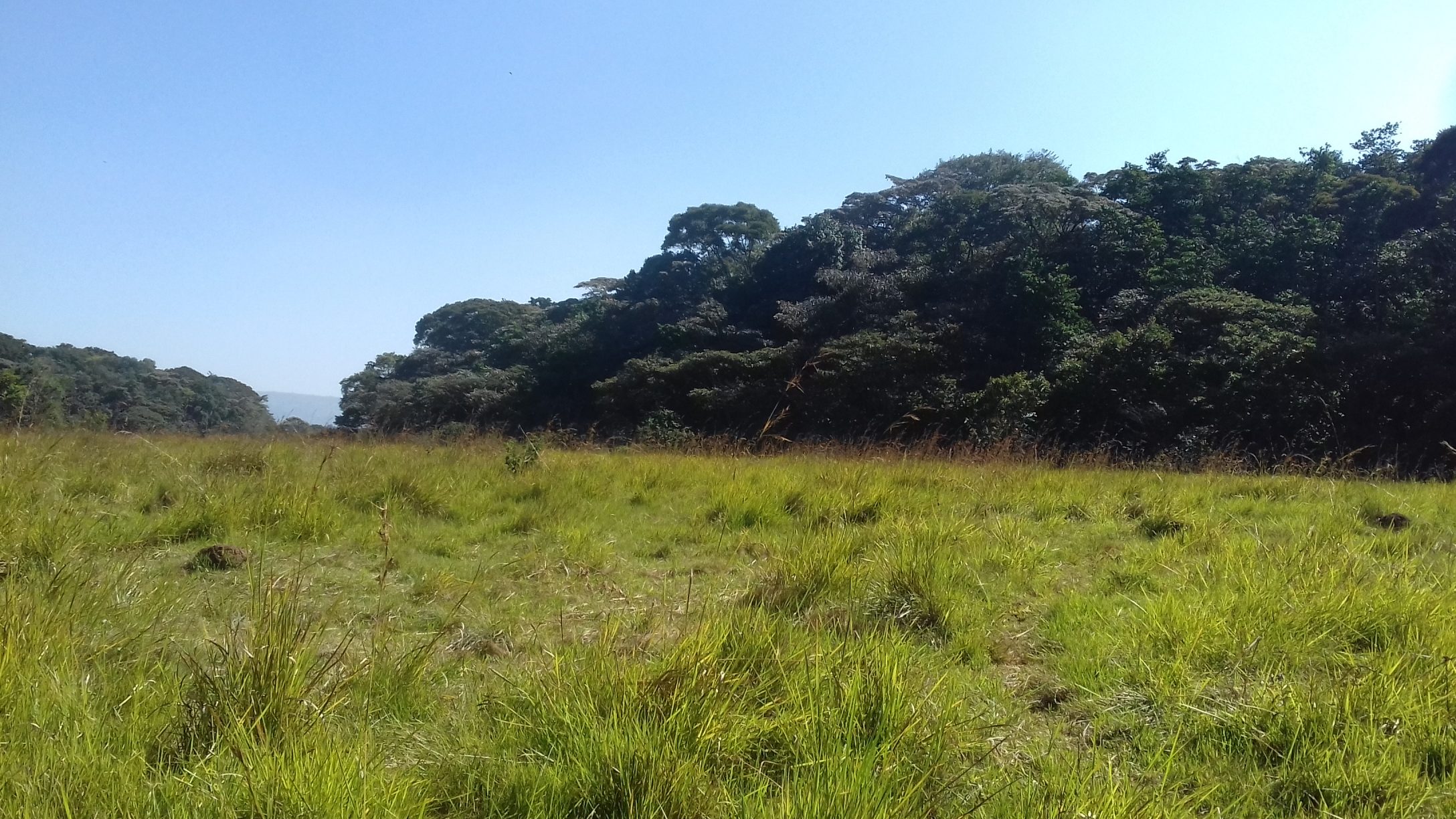For some Kenyan nature lovers, Kakamega Forest is the Rolex of Kenyan forests and if you haven’t been to Kakamega Forest, they’ll dismiss your sense of wonder for anything else, because nothing can really compare. All of my grandparents lived within a half hour drive of the forest, and it’s where my parents grew up, so I had decided to visit for once, instead of just passing through on bumpy roads surrounded by tall trees. These days the transport is vastly improved, but during my childhood, these trips involved crowded face-me-by-force matatus, making numerous stops and accepting all passengers and their luggage whatever the size. There was never any time or space for sightseeing.
I arrived at the Isecheno Gate of Kakamega Forest just a few minutes before 9 am. We all introduced ourselves—me, five tourists from Germany, and B, our forest guide. He was the most jovial forest guide I’ve ever met. I’d been worried about going into a rainforest with worn-out sneakers; on the phone, he’d emphasized that we had to carry enough food and water, so I’d made sure to take precautions, bringing a raincoat, an extra jacket, and a bag with food in case we got lost. But I quickly realized that I had the most luggage of anyone; B was wearing blue crocs and carrying nothing but binoculars.
As we walked, B gave us the scientific name, the English name, the German name, and the Lwisukha name of everything we were seeing, or were to look for. We stopped at the 750-year-old Olea capensis or Mutukuyo tree that has a circumference so wide that it takes 12 people to go around it (we were only seven). After an hour it got predictable; we would stop at every other plant and B would saying this is medicinal, this is medicinal, and this is medicinal. We saw plants that cure stomach ulcers, food poisoning, menstrual cramps, coughs, fungal infections, broken bones, asthma, allergies, chest infections, insomnia, and prostate cancer. We were not allowed take anything out of the forest.
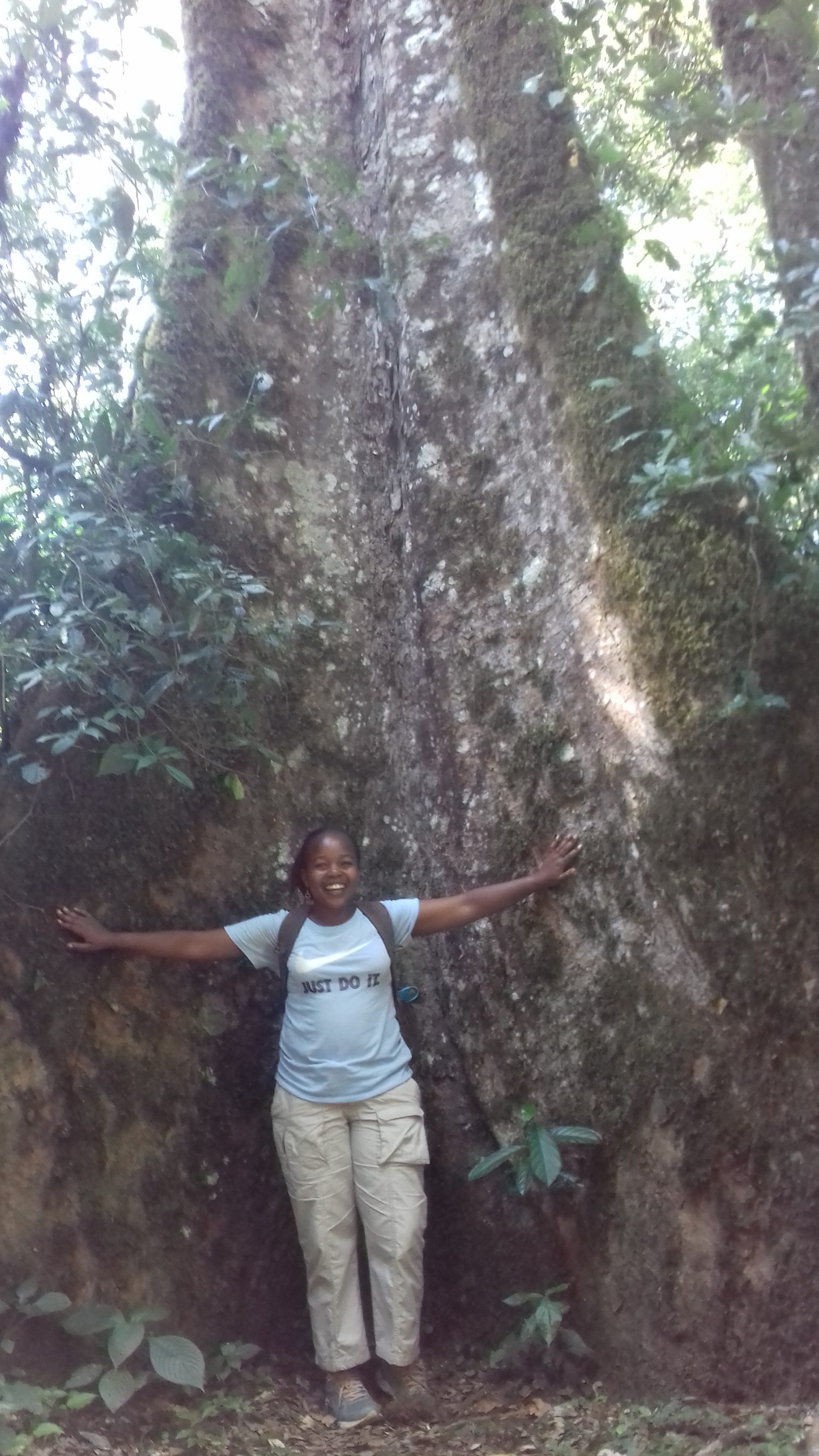
There were snakes, but we never saw them; they’d slither away, fleeing the sound of our vibrations.
As we walked, B mentioned that he’d been to the forests in Uganda, in Rwanda, and even Virunga in DRC. He organized tours to those places, if we were interested. He’d also been to some forests in Europe, in Australia and in the US. I was afraid he might suggest that Kakamega Forest is not that impressive after all, that we should go to another country to see better versions of what we were seeing. But he did not say this. He remained upbeat about the tour we were on.
We walked through an open field with grass that will one day be covered with trees, as happens in this forest, but today it’s where the jackals come to hunt for hares, where the civets and the pangolins come to get insects, and where the birds have their nests because it isn’t as cold as inside the forests. We were told that a night forest tour was better for seeing many of the animals that live in this forest. I kept swatting away the insects that flew around my oiled hair.
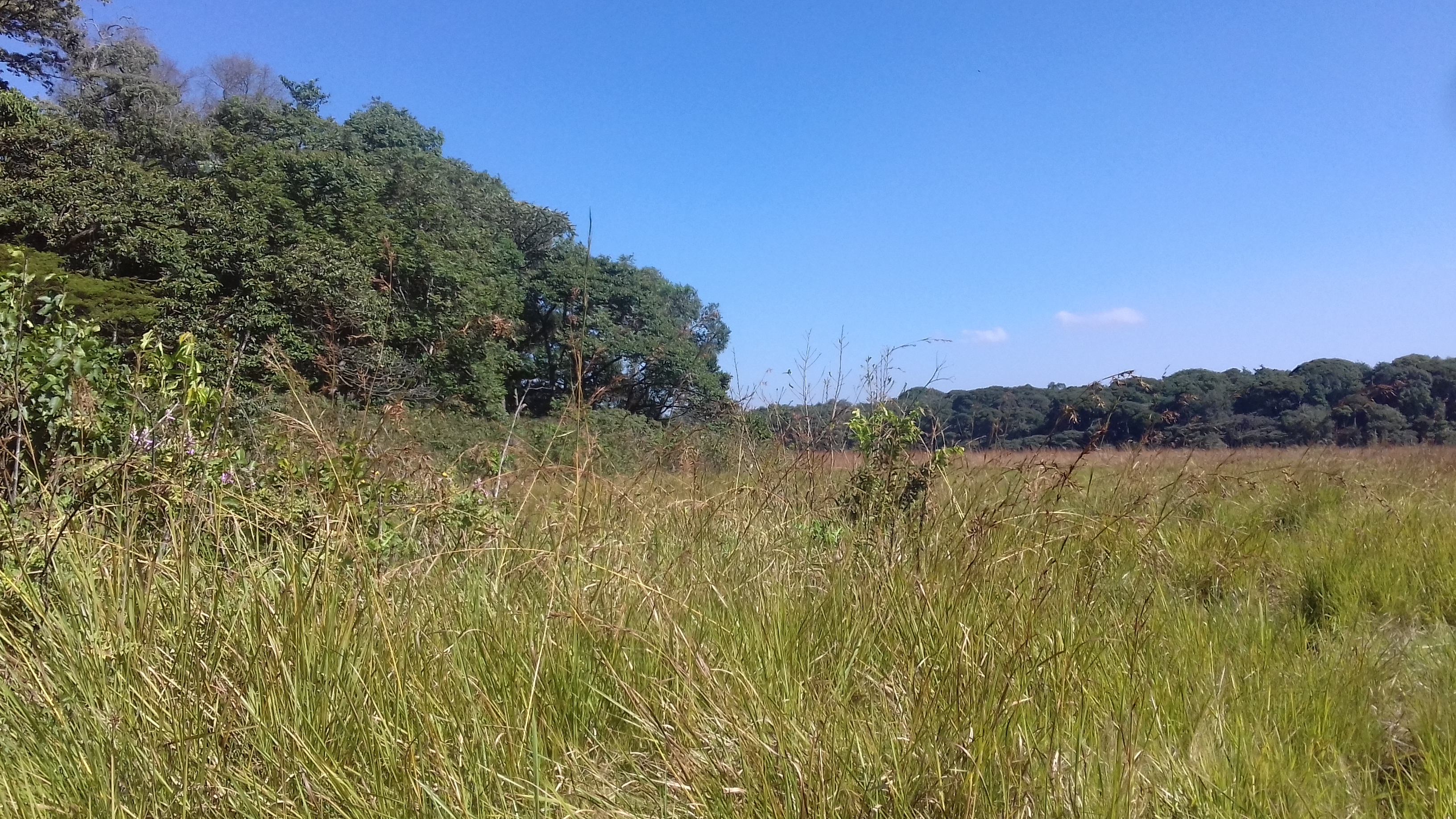

We passed lots of mushrooms, some of the type that we cook at home, but also many other varieties of given the collective name malalushitsa, which you will die or go mad if you eat. B repeated this phrase many times; If you eat this you will die or go mad. At least three times we passed abandoned bundles of sticks; he explained that since it is illegal to collect firewood in the forest, the gatherers had either run away or been arrested.
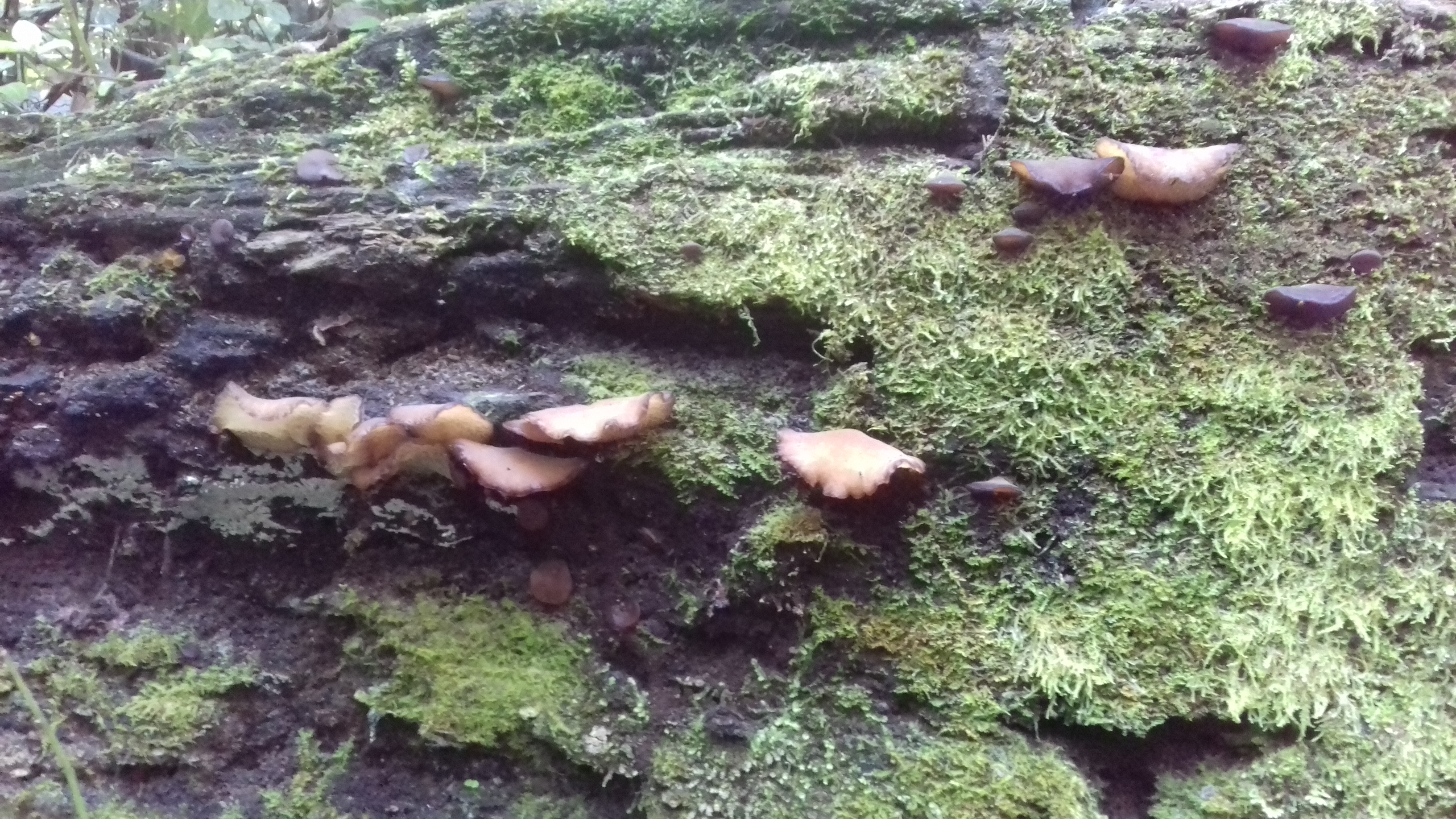
We took a few breaks to stare at colobus monkeys, blue monkeys, and red-tail monkeys in trees that were over fifty meters tall. As we got to an elevation of 1400 meters, I wondered when we were going to stop for lunch.
A green viper snake crossed the path just in front of me but I didn’t scream; I simply bumped into the person behind me. B heard the commotion, and was disappointed it had slithered away so fast. I was shaking like a leaf. He pressed for a detailed description: What color was it, how big, where did it go? I pointed.
We moved on. You were very lucky, he said. I wasn’t sure if he meant I was lucky for not getting bitten by a snake or lucky to see a snake.
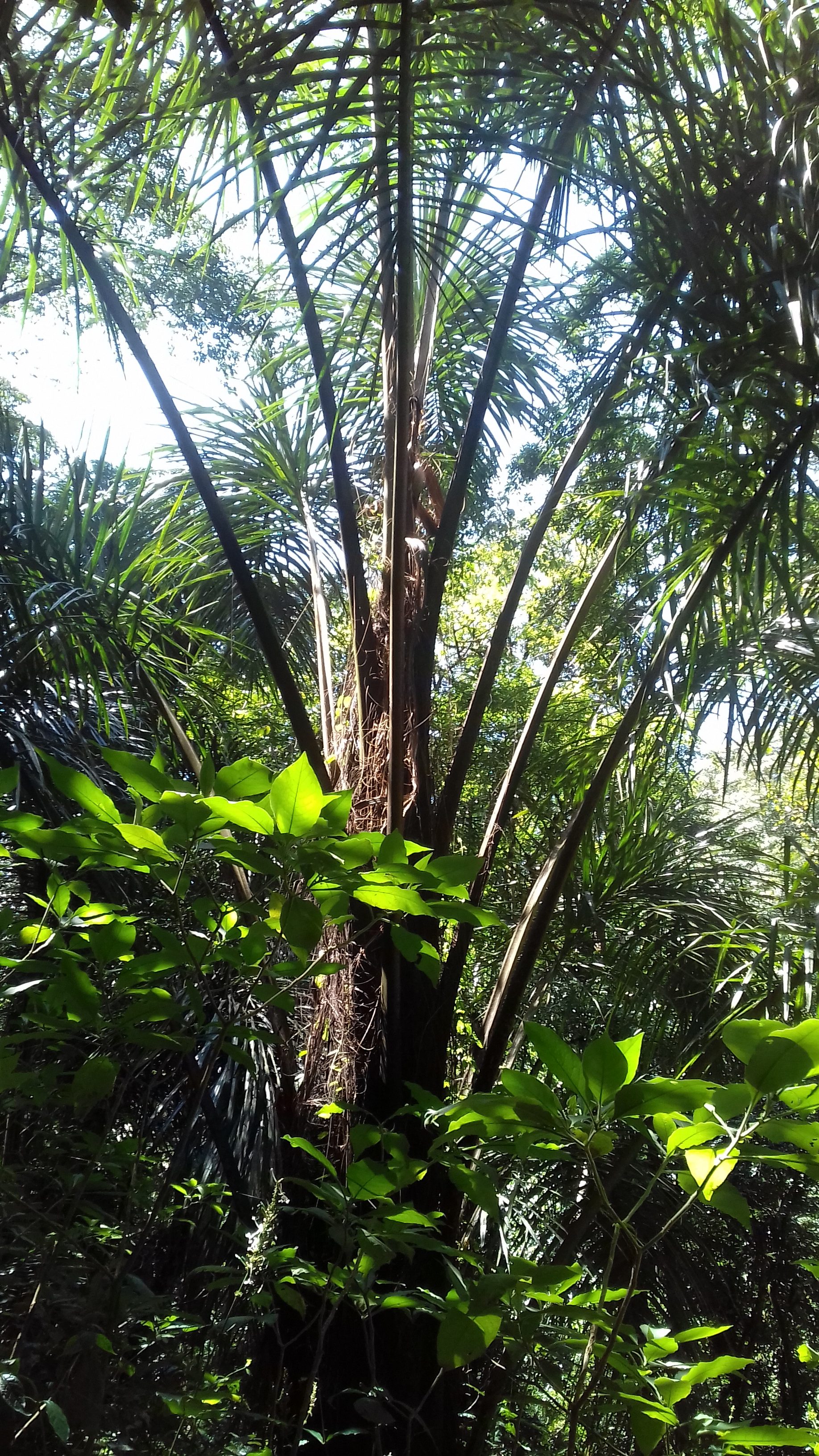
When we got to a stand of very big palm trees, I was surprised; I wasn’t expecting to see palm trees in a forest. We stopped at the Yala River where everyone else wanted to swim, after a quick snack. I wanted to sleep. I had been so excited about this hike the night before that I hadn’t slept enough. We sat on buttress roots. There were stingless bees flying close by, but I didn’t believe that they were harmless and I didn’t believe the explanation about hippos and crocodiles being blocked off upstream.
I watched the swimmers.
Before leaving the river we found a vine that was strong enough to swing on, and took turns swinging on it. I had zero grip and little strength in my arms, but while I slid, I didn’t fall. I didn’t want to say I didn’t try.
Two men hurried by with a 20-litre jerrycan of what must have been illegal brew; they nervously responded to B’s greeting and went on their way.

We spent two more hours walking out of the forest and were out by 4pm.
B helped the German tourists get a taxi and hailed a bodaboda for me. I climbed on, expecting a ride to Khayega alone, but I was the middle passenger, sandwiched between B and the bodaboda driver, who were friends and talked to each other over the ride, somehow louder than the roaring motorcycle engine. As I listened, I interrupted asking for a few translations, since my Lwisukha vocabulary is only so-so. Having concluded his day’s work, B was rushing home to see to his child who was unwell; coincidentally, the driver’s child was also unwell, having had a tooth infection since before Christmas. At the clinic he was charged 600 shillings for medicines and then they had a follow-up visit to the Kakamega Referral Hospital to deal with the tooth infection after the pus had dried up; it sounded like the child had come out of a near-death situation. He believed his child’s illness was because “mundu yamusiuvira shindu,” (“someone threw something on the child”). B agreed that his child’s unusual skin condition—with a related fever and lots of mucous—could also be caused by bewitching. They wondered who would target their innocent children, and we all sighed in Lwisukha “Wah!”
When we arrived at the Isecheno Gate, B alighted and congratulated me for completing the hike; I hadn’t looked like I would make it, he said. I proceeded on to Khayega as the lone passenger. When the driver asked me how much I’d paid for the forest tour and the guide, I told him how much the Kenya Forest Service fee was, but he again wanted to know the guiding fee, which sounded like prying. I lied that the booking was part of a prior arrangement with a group, so I couldn’t be sure how much money went to the forest guide.
As we rode past homesteads with small tea plantations, we started talking about tea and he told me I shouldn’t trust the independent tea brokers. Suddenly he slowed down and pointed at a house, explaining that an old lady who lived there had recently died. “Mundu yamuremaka” (Somebody hacked her to death). She’d been found among the banana trees, and her body was still at the mortuary. Before I could ask questions, he was back to talking about tea: you couldn’t just harvest your leaves, dry them, and make your own tea, he said; he told me about the grading process, how the grade one and two teas are for export.
When we reached Khayega, I alighted and paid 150 shillings for my trip. It didn’t take long to find a matatu. I’d been told the trip should cost 50 shillings but when I was charged 80, I didn’t have the energy to argue. I just wanted to get to my parents’ house before dark.
Lutivini Majanja

